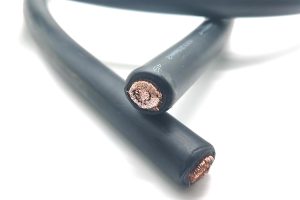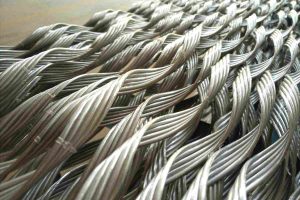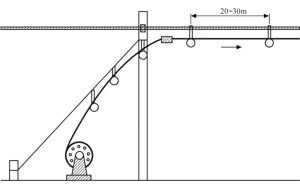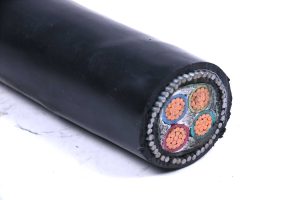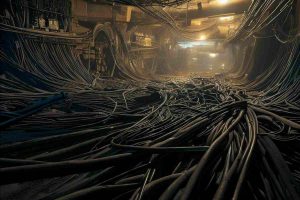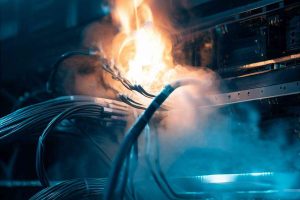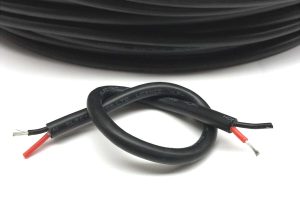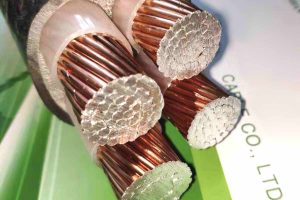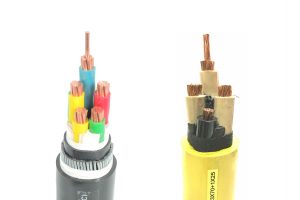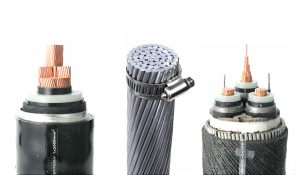In the industrial and construction world, Choosing the right cable is crucial to ensure safe and efficient operation. The H07RN-F cable stands out as a versatile and resistant option, widely used for mobile equipment, fixed wiring and various applications in industrial environments. Besides, Its ability to withstand harsh weather conditions and its flexibility make it a preferred choice for industry and specialty applications., like wind power.
Information
Wire and cable are important industrial products for a wide range of applications.. ZMS provides you with technical information on all types of wire and cable.

Preformed Truss Rods: Protection and Versatility in Electrical Installations
In the world of electrical installations, Cable protection is vitally important to ensure safe and efficient operation. Preformed rebars are an innovative solution that has gained popularity for its ability to protect cables from a variety of external threats., like vibrations, tightening efforts, abrasion and arcing.
How to Install OPGW Fiber Optic Cable for Reliable Communication?
The OPGW fiber optic cable is the future of electrical connectivity. Reliability and applicability come together in an innovative solution that has revolutionized electrical systems. ZMS reveals the secrets of OPGW fiber optic cable installation!!
Exploring Cable Conductor Types
The types of cable conductors are classified according to their material, its shape and use. Different applications require the use of different types of conductors. Now, ZMS walks you through the various electrical conductors.
Laying of Underground High Voltage Cables
high voltage cables, that are a common presence in our daily life, They are often installed on electrical towers in the suburbs. Nevertheless, It is interesting to note that some of the cables continue to use high-voltage transmission even when they enter urban areas.. This has the benefit of effectively reducing energy losses.. Hoy, ZMS takes you deep into underground power cables.
What is Fireproof Fiber Optic Cable?
Fireproof fiber optic cable is a safe and reliable option for data transmission. This type of cables has a special flame retardant polyethylene or flame retardant PVC sheath instead of a conventional sheath. This modification in the materials does not alter the structure, dimensions or transmission properties of the cable.
Vulcanization of Cables: Improving the Strength and Durability of Insulation
Cable vulcanization is a crucial step in the cable manufacturing process.. The main objective of this procedure is to improve the physical and mechanical properties of the rubber used as insulation.. Vulcanization involves the crosslinking of rubber molecules into a three-dimensional network through external shearing and high temperatures.. This process gives the rubber greater tensile strength., toughness, ability to resist aging and elasticity.
Discovering Copper Clad Aluminum Cable in Detail
Copper clad aluminum cable is an innovative solution that seeks to balance the cost and performance of cables in a context of scarce copper resources.. This type of cable is characterized by having a main aluminum conductor covered by a layer of copper on the outside.. The introduction of this technology has made it possible to take advantage of the copper conductor, as its excellent electrical performance, while reducing the cost and weight associated with using aluminum as the primary material.
Differences Between Plastic and Rubber Insulated Cables
When it comes to electrical cables, there are different types of insulation used to protect conductors and ensure safety in electrical installations. Two of the most common types of insulation are plastic and rubber.. In this article, we will explore the differences between plastic and rubber insulated cables, His composition, their uses and the advantages and disadvantages of each.
Types and Characteristics of High Voltage Conductors
High-voltage conductors play a critical role in the efficient and safe transmission of electrical power over long distances.. These special cables are designed to withstand high voltages and carry large amounts of electricity., allowing energy to be brought from the generating plants to the places where it is needed.

